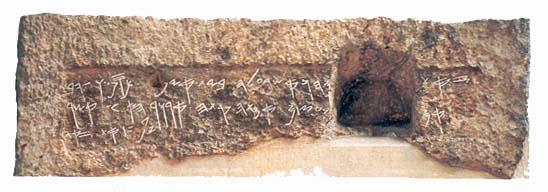Image Details

British Museum
Most scholars date the Royal Steward inscription and the numerous lmlk (“belonging to the king”) stamps to the reign of Hezekiah (727–698 B.C.E.)—the date also generally assigned to the Siloam Inscription. This Hezekiah-period script can be distinguished from pre-Exilic script of a century later, which in turn can be distinguished from post-Exilic, paleo-Hebrew script. For example, the first letter in the first line of the Siloam Inscription (see drawing in “The Siloam Inscription AinÆt Hasmonean”) is he, which is also the first letter of the second line and the last letter of the third line; it is drawn here, in classic eighth-century B.C.E. form, with a single downstroke and three parallel horizontal strokes. In script from the late seventh and early sixth century B.C.E., the bottom two horizontal strokes of the he tended to converge at their forward edge. In later paleo-Hebrew, the bottom two strokes of the he formed a small triangle with the downstroke (see drawing in “Paleo-Hebrew Vs. Old Hebrew: The Long and the Short of It“). This paleo-Hebrew he is clearly visible on the Hasmonean coin, where it is circled in yellow (see photo).
